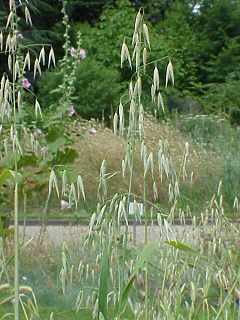
Avena is a genus of Eurasian and African plants in the grass family. Collectively known as the oats, they include some species which have been cultivated for thousands of years as a food source for humans and livestock. They are widespread throughout Europe, Asia and northwest Africa. Several species have become naturalized in many parts of the world, and are regarded as invasive weeds where they compete with crop production. All oats have edible seeds, though they are small and hard to harvest in most species.
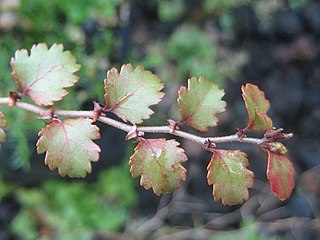
The Antarctic flora is a distinct community of vascular plants which evolved millions of years ago on the supercontinent of Gondwana. It is now found on several separate areas of the Southern Hemisphere, including southern South America, southernmost Africa, New Zealand, Australia and New Caledonia. Joseph Dalton Hooker was the first to notice similarities in the flora and speculated that Antarctica had served as either a source or a transitional point, and that land masses now separated might formerly have been adjacent.

Arrhenatherum, commonly called oatgrass or button-grass, is a genus of Eurasian and North African plants in grass family.

Lolium is a genus of tufted grasses in the bluegrass subfamily of the grass family. It is often called ryegrass, but this term is sometimes used to refer to grasses in other genera.
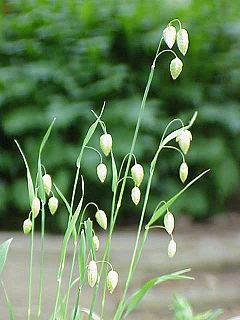
Briza is a genus of annual and perennial plants in the grass family, native to northern temperate regions of Eurasia, North Africa, and certain islands in the Atlantic.

Cenchrus is a widespread genus of plants in the grass family. Its species are native to many countries in Asia, Africa, Australia, the Americas, and various oceanic islands.

Andropogon is a widespread genus of plants in the grass family, native to much of Asia, Africa, and the Americas as well as southern Europe and various oceanic islands.

Anthoxanthum, commonly known as hornworts, vernal grasses, or vernalgrasses, is a genus of plants in the grass family.

Brachypodium is a genus of plants in the grass family, widespread across much of Africa, Eurasia, and Latin America. It is classified in its own tribe Brachypodieae.
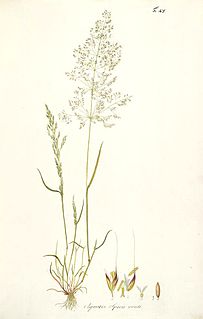
Apera is a small genus of annual grasses, known commonly as silkybent grass or windgrass. They are native to Europe, North Africa and parts of Asia but have been introduced and naturalized in much of North and South America.
Acritochaete is a genus of African plants in the grass family.
Acroceras is a genus of tropical and subtropical plants in the grass family.
Afrotrichloris is a genus of East African plants in the grass family.
Andropterum is a genus of African plants in the grass family. There is only one known species, Andropterum stolzii, native to Zimbabwe, Zambia, Mozambique, Tanzania, Malawi and Burundi.
Bewsia is a genus of African plants in the grass family. The only known species is Bewsia biflora, widespread across much of sub-Saharan Africa from Ivory Coast to Tanzania to KwaZulu-Natal.
Bromuniola is a genus of Central African plants in the grass family. The only known species is Bromuniola gossweileri, native to Zaïre, Tanzania, Angola, and Zambia.
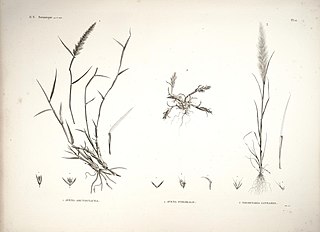
Centropodia is a genus of Asian and African plants in the grass family.
Chaetopoa is a genus of African plants in the grass family, found only in Tanzania.
Chrysochloa is a genus of African plants in the grass family.
Phyllorachis is a genus of African plants in the grass family. The only known species is Phyllorachis sagittata native to Tanzania, Zambia, Angola, Malawi, and Mozambique.










